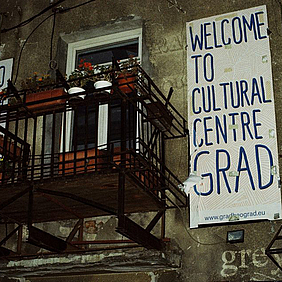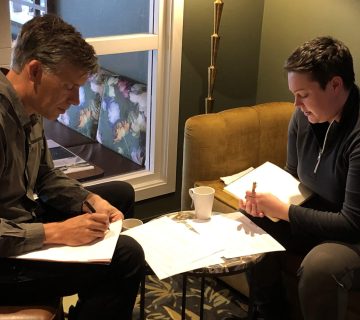Tourism is growing in Serbia and this is a new way to see and experience the industrial heritage of our cities, in the footsteps of the locals
In the post-socialist cities, industrial heritage tends to be located in the inner-city since those locations were suitable and easily accessible to the workers from all neighborhoods to come to their workplace. Belgrade, as the capital of the former SFR Yugoslavia, has been in transition since the 2000s. With many derelict former industrial quarters and unused spaces in the downtown, some parts of the city started developing once again, aided by bottom-up strategies. Established in 2015 by the online magazine ‘Still in Belgrade‘ and NGO ‘Aesop’, Creative walking tours tend to interpret the narratives of former industrial areas such as Savamala and Lower Dorcol. Through visual observation and stories, creative tours tend to not only revive historical and geographical facts about these quarters but also to explain the contemporary usage of industrial heritage.
Besides the effects of the war economy, the urban growth of the Serbian capital has been determined by dramatic social, economic and political impairment, as has been the case with the other post-socialist transitional cities in Central and Eastern Europe. The rapid shift from a communist regime to a neo-liberal economy has hindered the urban development in Serbia and led to political and social instability and inconsistent planning systems. With an onset of bottom-up development of Savamala starting in 2008 and the spill-over effect caused by it influenced regeneration of industrial heritage in Dobračina Street in the Lower Dorćol, and since 2015 re-usage of the former BIP beer factory in Cetinjska Street in the same neighborhood, Belgrade started producing more authentic spaces for people to get together and consume culture, music, food and coffee to name but a few.
Since the year 2000, tourism started growing in Serbia, particularly in the capital. According to statistics of TOS-Tourist Organisation of Serbia it increases around 15% each year. The Government of Republic of Serbia in the tourism sector sees an opportunity for development, and considers it an important part of the local economy, but also as a rather important factor for building up the new image of the country. As stated by Euronews, Serbia has a potential to become a leading tourist destination in the Balkans. Respectable media worldwide, such as the Guardian, Business Insider, NY Times and the like, have covered the stories on the revival of industrial spaces in Belgrade and the birth of creative and ‘hipster’ districts a number of times so far.
A good portion of tourists in Belgrade are amongst those who are 20-40 years old and they are very much interested in experiencing the city the way the locals do and get an insight into what is going on at this particular moment and not just visit traditional tourist places of interest. Therefore, the goals of creative walking tours are to point out the new creativity, street art and cultural scene which seem to have been on the rise in Belgrade as of recent times and to showcase up-and-coming and mix-used creative quarters. Creative walking tours are available throughout the week by appointment via email: stillinbelgradetours@gmail.com. The duration is from 2 to maximum 4 hours.
Dragana Kostica is the Belgrade-based editor in chief and founder of Still in Belgrade art, culture and club scene magazine. She holds a Master of Arts in Cultural Policy and Management in Arts (MA of Arts) and a Bachelor degree in Archaeology. Currently, she is searching for the right PhD programme. Her research interests are focused on creative industries, creative cities, cultural heritage, marketing in culture and media. She can be contacted at: draganakostica1987@gmail.com
To cite this article:
Kostica, D. (2016) ‘Walking tours interpret industrial heritage of Belgrade’. In Interpret Europe Newsletter 4-2016, 26
Available online:
https://www.interpret-europe.net/fileadmin/Documents/publications/Newsletters/ie-newsletter_2016-4_winter.pdf




